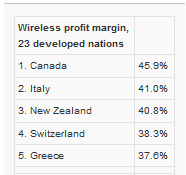A blog by Peter Nowak, called “Tablets in the classroom will soon be the norm,” discusses the emerging popularity of tablets in educational institutes.
Personally, I do not own a tablet because I like the full capability of a real computer. A tablet just won’t cut it for me if it is incompatible with many popular software and programs. However, I admire the size factor, which is a selling point that has really caught my attention – thanks to all the marketing involved.
Two points arise in my opinion:
1) Do students really need a tablet or is it a trend that companies’ successfully created?
2) Companies found a gap for tablets in the portable device market.
Most people who have a tablet also have a laptop/desktop computer. Consumers are willing to spend extra money on a device that is smaller, more portable, but less compatible. In a classroom, what functions of a device is exactly needed? Typing? Researching? Presenting? Or is it just an entertainment device disguised as a working device? By combining the “working” functions in a device that is capable of playing games specifically designed for it, such as Apple’s iPad and Google Nexus 7, consumers blindly purchase it thinking it’s so great it can do everything and it’s so portable! A tablet fits perfectly between an Ultrabook (thin and light laptops) and a smartphone.
Lastly, an interest fact about the history of tablets: IBM (later transferred to Lenovo) created tablets back in 1992, but it didn’t create such a big hit in the market. The size wasn’t necessarily much larger than a normal laptop. Why does Apple’s iPad become so popular globally? Are people buying it because it’s Apple and everyone else just follows along thinking it must be great if so many people are buying it?












Recent Comments